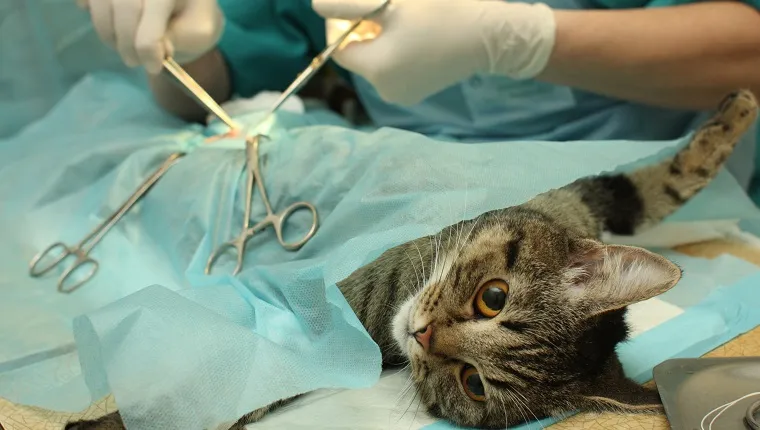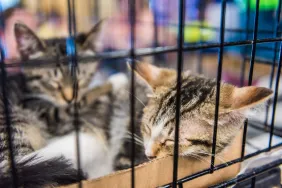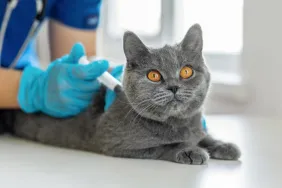Your little baby is all grown up and about ready to be spayed if she’s a girl or neutered if he’s a boy. Naturally, as a pet parent, you’re feeling a little worried.
But while any surgery has its risks, spaying and neutering are common procedures that most veterinarians have had lots of practice doing. February is Spay/Neuter Awareness Month, so it’s a great time to learn more about what happens when your cat goes through this process.
What should you expect before, during, and after the operation? Here are a few things you should know to prepare for the spaying or neutering procedure.
Pre-surgical Preparation Before Spaying Or Neutering
Most vets will ask that you fast your cat — meaning no food, and in some cases, no water — for up to twelve hours prior to surgery. This is to reduce the likelihood that your cat will vomit during the procedure, which can cause very serious complications.
If your cat goes outdoors, you should keep them indoors for the night prior to surgery to ensure they’re home in time for the appointment and that they don’t eat or drink anything during the night.
If your kitty is the type to disappear when they see the cat carrier, you may consider closing them in a bathroom for the night so you can more easily catch them in the morning. Of course, training them beforehand to be comfortable with the carrier will make the process that much easier. That way, you won’t need to spend so much effort capturing them.
What Happens During The Spay Or Neuter Procedure

Spay and neuter are surgical procedures, so a licensed vet, typically assisted by one or two technicians, will perform the operation in a sterile environment.
Some clinics place an intravenous catheter to administer fluids or drugs in case of an emergency, and some will not. If the vet uses a catheter or other monitoring equipment, the technicians will shave areas on either the front or back leg, and possibly the bottom of a back foot as well.
Your vet will sedate and anesthetize your cat. The procedure usually lasts anywhere from five to 30 minutes, depending on the age, size, and health of the animal and experience level of the surgeon.
The incisions on a male cat’s scrotum will be very small, and may not require any sutures. It’s very rare for a male cat to have complications following a neuter procedure.
For females, the procedure is more invasive. There will be a shaved area on the belly with a small incision just below the navel. Many vets will use dissolvable sutures, reducing the need for post-surgical visits. But pet parents must closely watch the incision for any sign of bleeding, swelling, or infection.
Post-surgical Care After The Spay Or Neuter Procedure
Barring any complication, cat parents can expect to pick up their pets a few hours after the surgery. Some cats may be groggy, but most will be relatively alert.
Male cats and young kittens will have the shortest recovery period. All cats should remain indoors for a few days following the procedure to allow for adequate healing.
Females who were going through their heat cycle when they had the spay surgery should stay inside for at least a week to minimize the chance of breeding attempts by males, which can result in serious injury.
Pet parents should contain especially playful cats in a small area to keep boisterous activity to a minimum while they heal.
The speed at which kitties recover from a spay or neuter surgery surprises most pet parents. Within 24 hours, most cats will be acting normally — eating, playing, and purring. So if kitty seems lethargic, check in with your vet to make sure that they’re healing as they should.
Has your cat had the spay or neuter procedure? What else should pet parents expect before the surgery? Let us know in the comments below!









